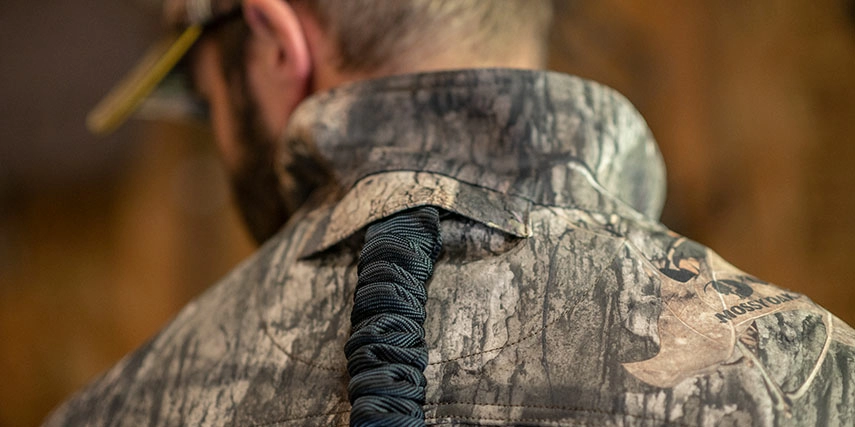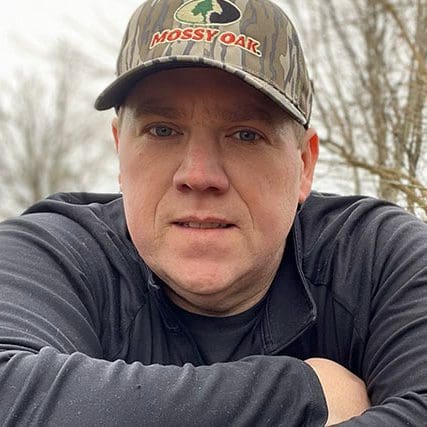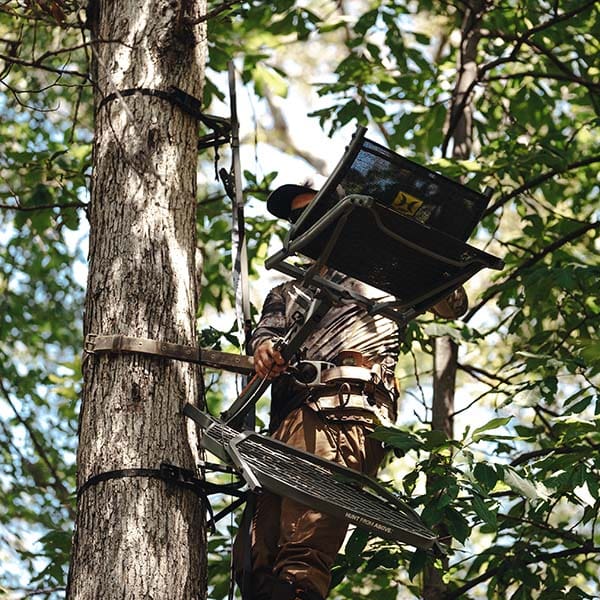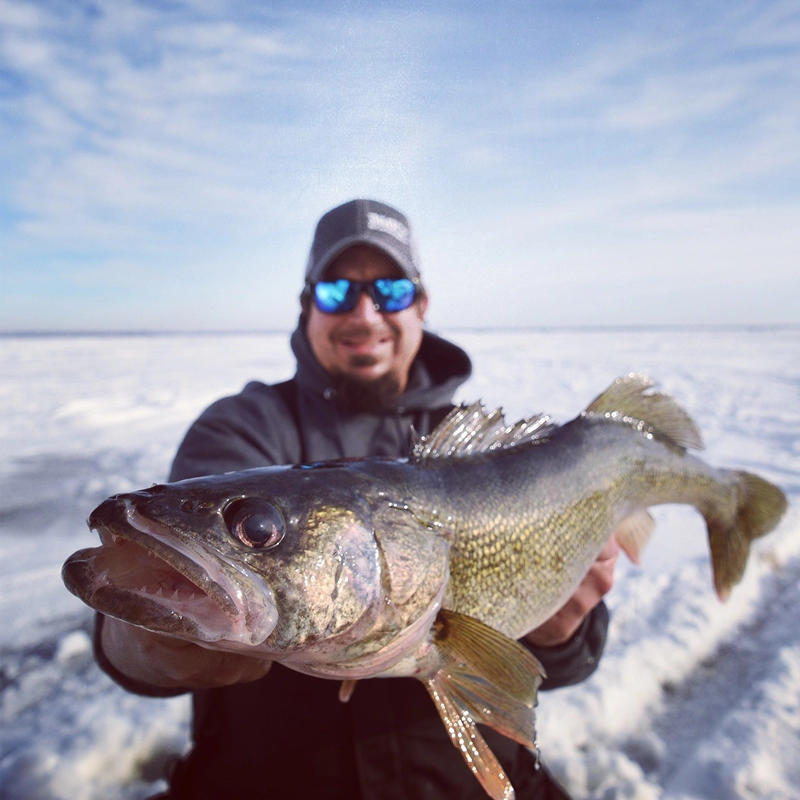Unfortunately, many hunters know first-hand the dangers of hunting while elevated in a tree, several feet from the ground. I recently reviewed a few statistics from different studies showing that an alarming twenty-eight percent of all bow hunters have fallen or nearly fallen from a tree stand, and thirteen percent of firearm hunters have fallen or nearly fallen.
Often, hunters think the threat of falling and being injured will never happen to them. Sadly, a Deer & Deer Hunting magazine study showed that one out of three hunters who hunt from a tree stand will experience a fall resulting in injury. The last alarming study results suggest that tree stand falls, not firearm accidents, are the largest source of hunting-related injuries and deaths in the United States. Our safety while hunting is nothing to ignore or undervalue.
Every year during Tree Stand Safety Awareness month, I often recount some close encounters I have experienced that, by God’s grace, did not injure myself or the people who were with me. When my brother and I were young teenagers, after gathering back at our truck after a morning of bowhunting, we joked about how we had beat Dad back to the truck, which rarely happened. The joking turned into worry after twenty minutes had passed from our scheduled meet-up time. Finally, we saw him coming our way, several yards out in the open field towards his tree stand. We quickly noticed our father was moving much slower than usual. We decided to meet him halfway to ensure he was feeling okay. He informed us that he had hunted a wooden ladder stand that had been on this farm for two or more years. When he was on the sixth or seventh step, it broke in half, causing a domino effect from that step to the bottom step, which jammed his back out of place before hitting the ground. It took a few weeks before he felt normal, yet we were thankful his injuries were no worse. Like my father, we have all had someone we know or love who has been involved in a tree stand accident. To help ensure this statistic decreases yearly, here are a few essential tips to help keep hunters safe.
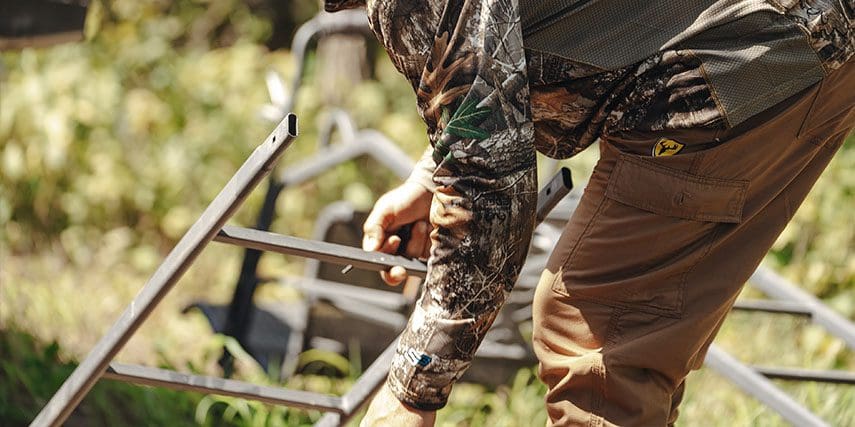
Thoroughly Inspect Tree Stands (New and Old) Before Hunting
As with my father’s unfortunate experience, tree stands exposed to the elements can often become unsafe to hunt without inspection. Wooden or homemade stands often need repair or yearly replacement for hunters to remain safe when hunting. A manufactured stand requires routine maintenance and inspection as well.
Several days before hunting, one must inspect all nuts and bolts, moving parts, seats, and, most importantly, the straps or chains that keep the stand in place several feet from the ground. One of the closest calls I have ever experienced came several hours into my hunt. After a morning of firearm hunting in a ladder stand, I decided to wrap it up and head back to our house for a late breakfast. After standing up and shouldering my rifle, I detached my safety harness and descended the twelve-foot ladder. When approximately 2 feet into my 12 feet descent, I heard a loud pop, as the ratchet strap that held the platform to the tree had broken due to being too weathered from a year in the elements. As the stand began to roll to the side of the tree, I was forced to jump from ten feet in the air. I landed on my knees, which sent an excruciating pain throughout my legs and lower back. I laid on my stomach for four to five minutes before finally standing up. Thankfully, the immediate pain had eased and left only my pride hurt. From that day forward, I never hunted a stand that had been up from the previous year without changing straps or cautiously observing them to ensure my safety.
All tree stands must be expected routinely for rust, loose parts, broken parts, weathered straps, and any damage that may have occurred from squirrels or other creatures who often like to chew on them. Once everything has been cleared of any safety concerns, it may be hunted by you, a friend, or a loved one.
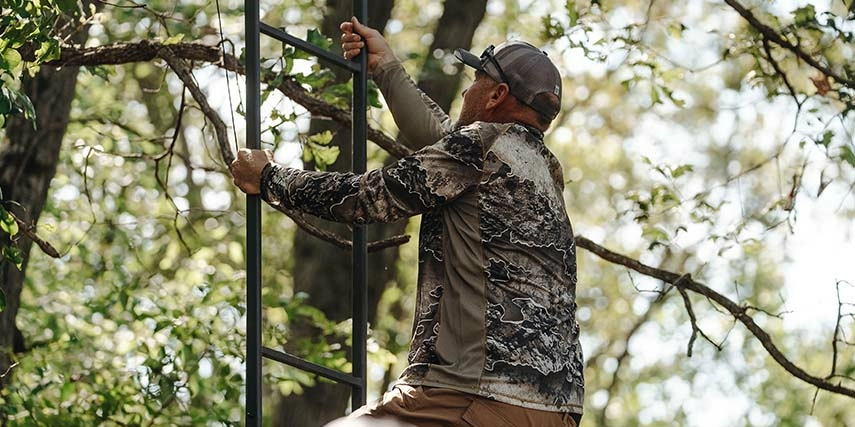
Safety Harness, Lifelines, And 3-Point Contact At All Times
For several years, a good friend and I helped conduct a tree stand safety class at our local NWTF (National Wild Turkey Federation) JAKES Event. This event was created for youth hunters to have fun and be educated about hunting and all things outdoors. Our session was often centered around the hunter always having three points of contact when climbing up or down a tree stand.
During our safety session, we would instruct young hunters to keep at least three points of contact on their tree stand when moving up or down. Three points of contact means two hands and one foot, or two feet and one hand, as long as three body parts touch the stand ladder when climbing. This guideline can be for ladder stands or climbing up sticks when using a hang-on style of stand. If you keep three points of contact, you will stay safe and secure when moving up or down the tree.
Most hunting accidents when using a tree stand often occur when climbing or stepping on or off the platform. The three-point-of-contact rule must be performed to keep hunters safe, yet using a lifeline is also vital for a hunter’s safety. A lifeline is a fall protection safety device, often made of a rope material. The lifeline is attached to the tree from the ground to the stand. The hunter then has a slipknot that slides up and down the rope when maneuvering up and down the ladder. If the hunter were to slip or fall, the knot catches, keeping the hunter from falling. The lifeline must always be used when hunting from a tree stand to provide maximum safety for hunters.
Wearing a safety harness is the last critical step for hunters to remain safe when hunting from a tree stand. A safety harness should always be worn, whether you are hunting from a climbing, ladder, or hang-on stand. A safety harness is a device that typically goes around the waist and the base of your legs and supports the upper body. A safety harness keeps the hunter from falling by catching and supporting the upper body to prevent suffocation until lowered to the ground or after regaining a three-point contact with the stand.When leaving for their next hunt, a hunter should never have to worry or leave their loved ones worried if they will make it back home safely. Safety is the number one priority when hunting and should be practiced during every second of the hunt. Use the above tips to protect yourself and enjoy hunting to its fullest.
